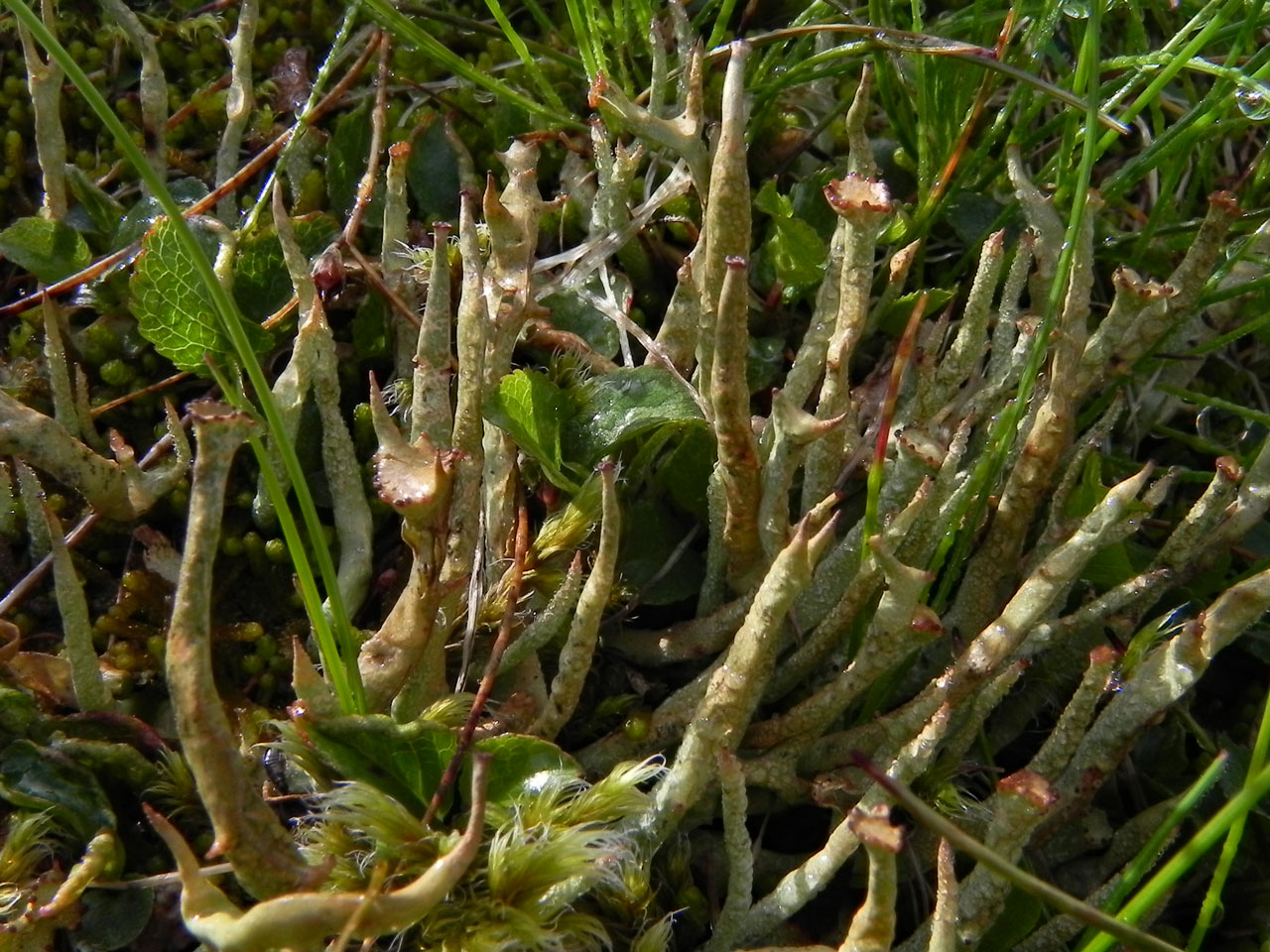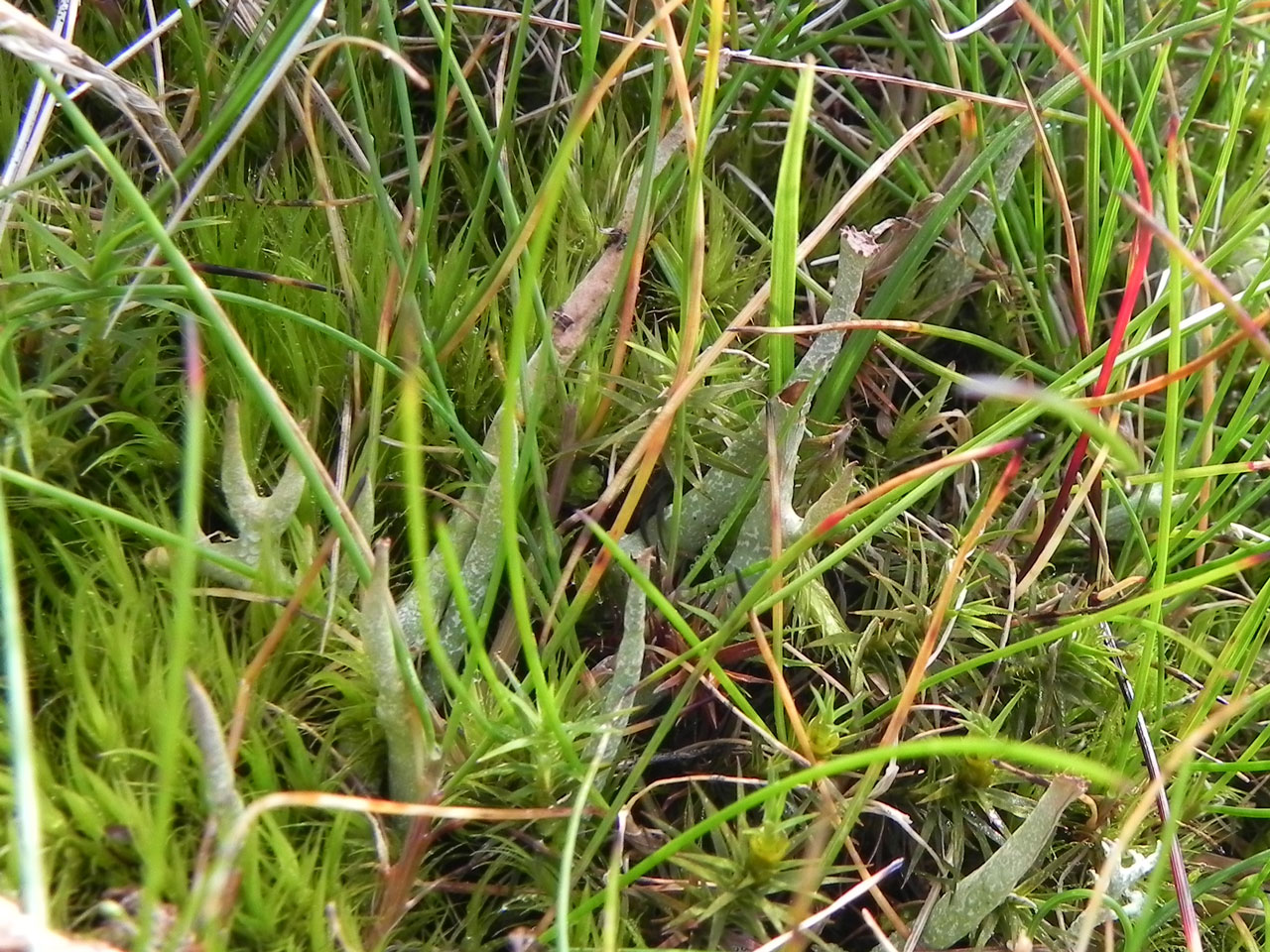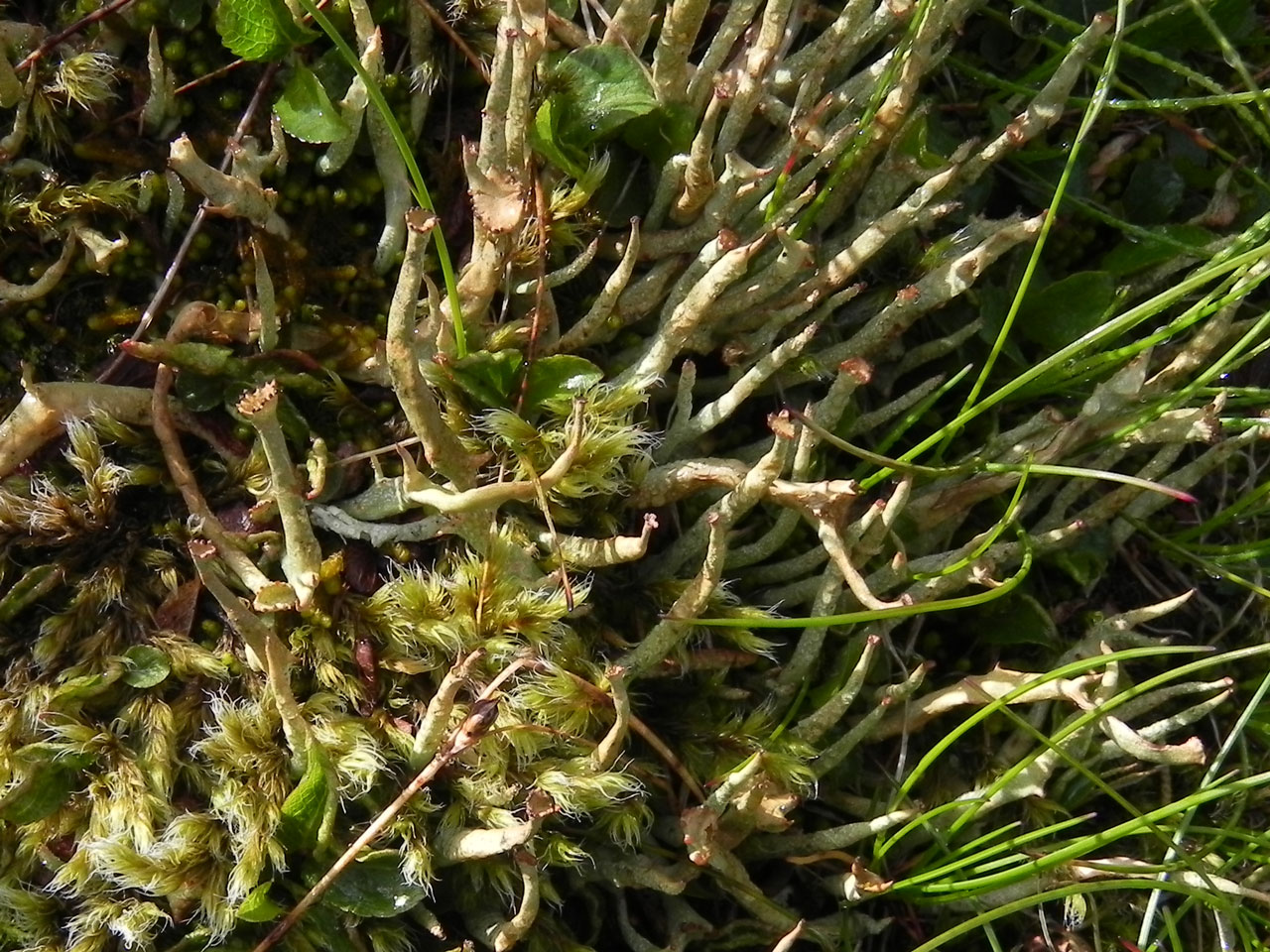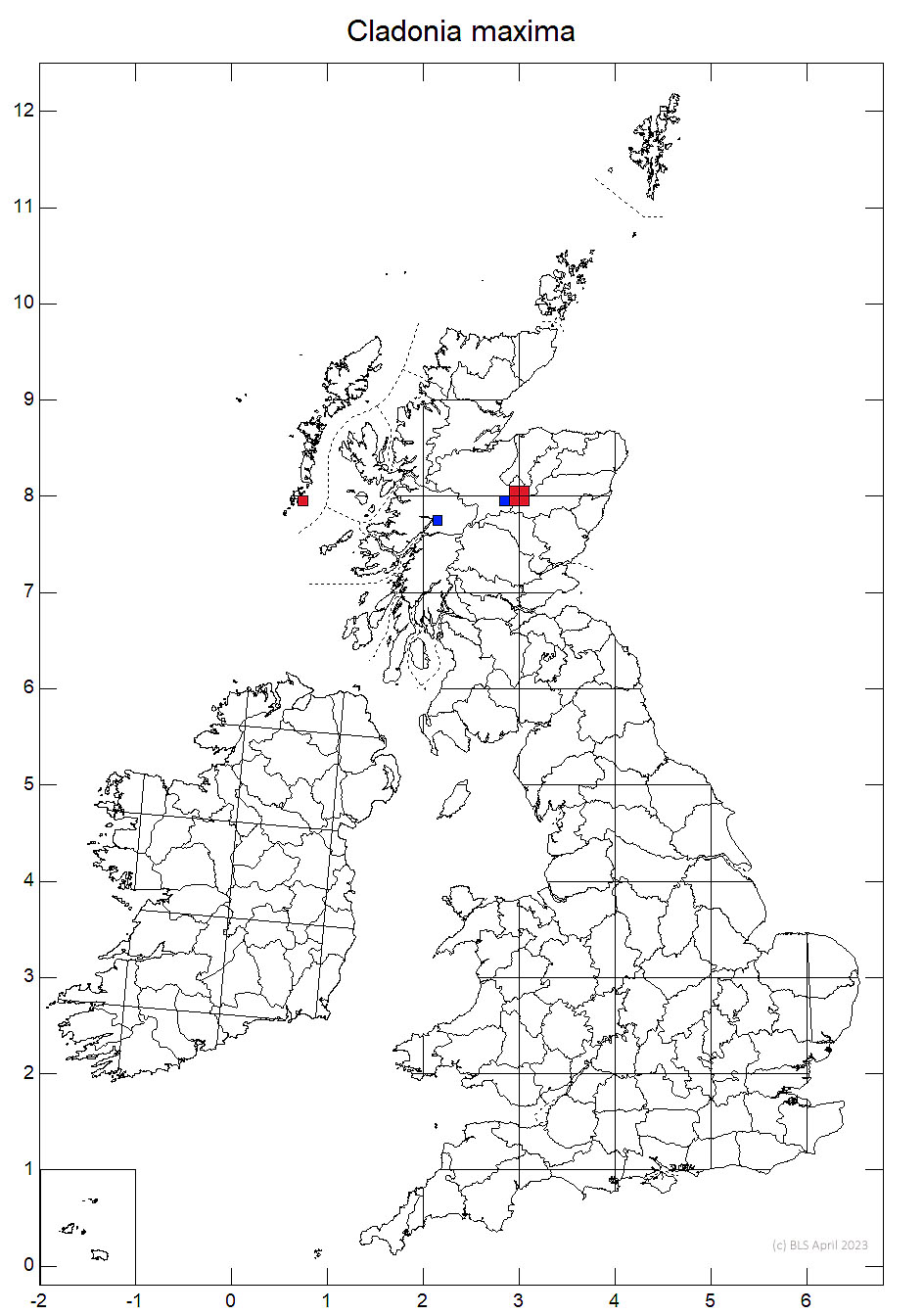Cladonia maxima
A rare and striking montane Heath Tail Cladonia of late snow-lie habitats. Resembles a robust and swollen Cladonia gracilis. In the Craingorms, grows in grassy late snow-lie communities, mainly a Deschampsia flexuosa variant of the Salix – Racomitrium snow bed community, U12), rather than Nardus snow patches as sometimes stated (Sanderson, 2010). With the grassy stands it is easily overlooked and needs targeted searching for.
Like C. gracilis, but with more robust, ± swollen and mostly subulate podetia, to 3 mm diam. and 5 cm tall, which are unbranched or 1- to 2-forked towards the apex, and the glaucous tinge, often brownish towards the apex and pale ochre-yellow towards base; surface even, uniform, occasionally with white flecks and lines (×20 lens). Scyphi very rare, narrow, barely wider than the podetium, rim irregularly dentate, occasionally with a single marginal proliferation. Podetial squamules rare, basal squamules absent. Thallus C–, K± yellow, KC–, Pd+ red, UV– (fumarprotocetraric acid and rarely atranorin).
Deeply embedded in boggy alluvial grassland dominated by Nardus stricta and moss tussocks above 900 m, often in the vicinity of late snow-lie; rare. Sanderson (2010) found that in the Cairngorms the main colonies were deeper into the snow patches than the Nardus snow bed communities (NVC Nardus stricta – Carex bigelowii grass-heath, U7), which were generally too dense for the Cladonia to grow in. Instead it was mostly found just beyond the Nardus communities and within a Deschampsia flexuosa dominated variant of NVC community Salix herbacea – Racomitrium heterostichum snow bed (U12) (Watson et al, 2010).

Central Highlands (Cairngorm Mountains, W. Inverness, Aonoch Mór).
Very localised and likely to be vulnerable to warming temperatures. Sanderson (2010) however found that it was more widespread on parts of the Cairngorm plateau sampled than previous records suggested.
Britain: Vulnerable
Scotland: Priority Taxon for Biodiversity in Scotland
Pino-Bodas, R., Sanderson, N., Cannon, P., Aptroot, A., Coppins, B., Orange, A. & Simkin, J. (2021). Lecanorales: Cladoniaceae, including the genera Cladonia, Pilophorus and Pycnothelia. Revisions of British and Irish Lichens19: 1-45. Link
Sanderson, N. A. (2010) Site Condition Monitoring for Lichens, Cairngorms SSSI. A report by Botanical Survey & Assessment to Scottish Natural Heritage.
Watson, A. Welch, Heslop D. R. E. F. 2010 Deschampsia flexuosa snowbed grassland on granitic mountains in the Cairngorms. Plant Ecology & Diversity 3: 95 – 99.
Text by Neil A Sanderson, based on Pino-Bodas et al (2021)



